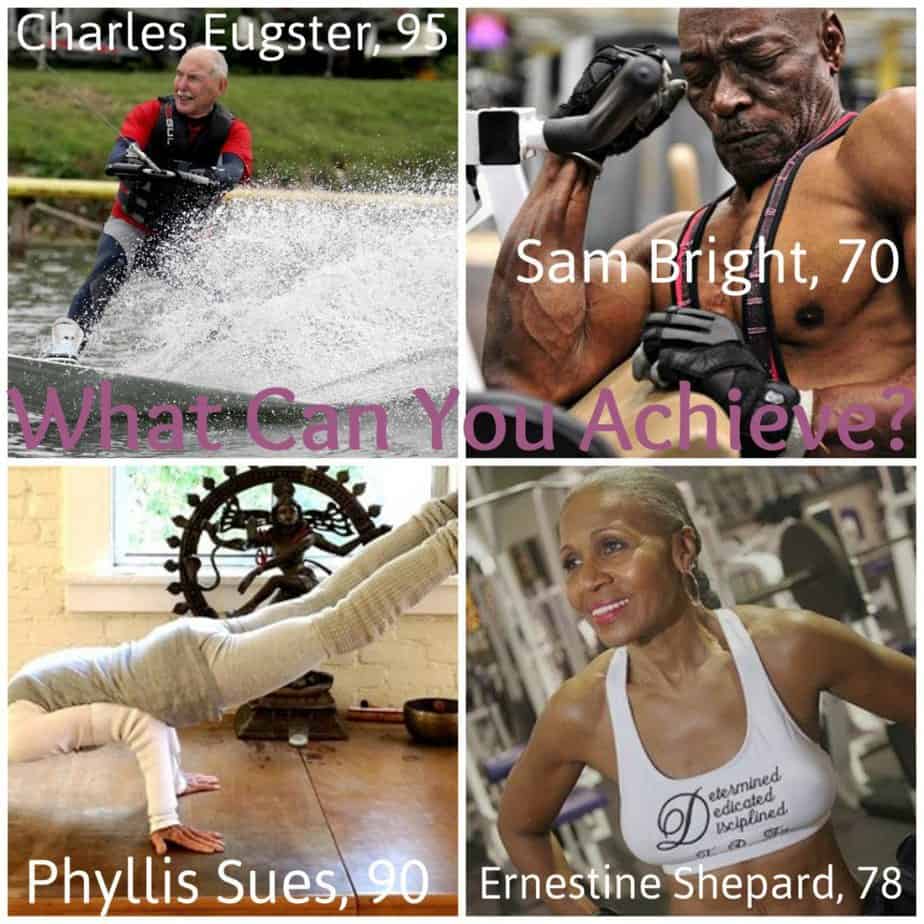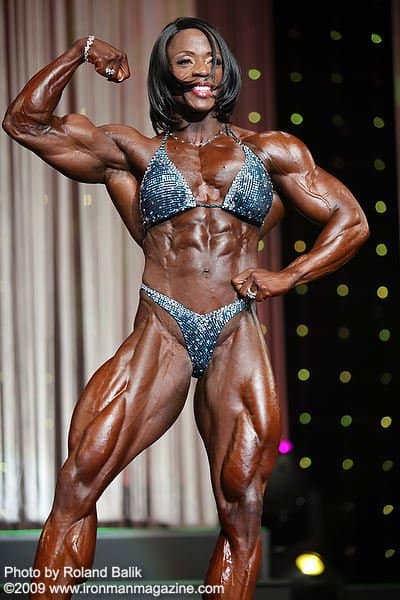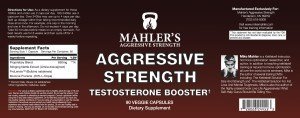How To Get Lean and Muscular Like Sean Penn
How did Sean Penn get so buff for his The Gunman movie role? More importantly, what can you do to get so lean and muscular, especially if you’re over 40? (Penn is 54.)
TO SAY that I was nearly jolted out of my chair is only a slight exaggeration. Netflix was streaming the movie, The Gunman, and pretty quickly you see Sean Penn like you’ve never seen him before.
Kapow!
I leaned forward the peered at the screen. Am I looking at Sean Penn’s muscular double, or some sort of film editing magic?
The man whose muscles are what the Daily Mail called “… a sight to behold” is 54 years old who has always been rather slight. Now he looms before me ripped, muscular, and impressive.
As soon as the movie was over, I jumped on the Interwebs and started searching around. I wanted to find the story behind how this one-time smallish Academy Award winning actor transformed himself into a muscular specimen.
Unfortunately, there was no “formula” to be found; only a lot of bloggers anxious to guess how he did it. (Ahem, yeah I get that.)
To become the beefcake he did — particularly at the age of 54 — required some basic sweat and grind, but I’m guessing that he (and his trainer) applied some science as well.
The rest of this blog post is about these four things:
- Why chronological age does not diminish your capacity to get lean and muscular, gents and ladies alike
- How to quickly build muscle and trim the fat, Sean Penn style
- Forget Sean Penn… how to get a better body the easy way
- The number one obstacle to you getting more lean and muscular
As you read on, keep the following two pictures in mind, so that you’re reminded of what’s possible.
Let’s dig in and get a sense of how you can transform your physical self, if you’re so willing.
1. Age doesn’t matter
If you found the pictures above of Penn’s physical transformation to be motivating, these will be as well:
The collage comes from Four Masters Who Defy Age and Prove That You Can Too! Those four people refused to get old in the way most of us think about it – decreased mobility, weakness, low energy, flaccid muscles and fat.
None were life long exercises, but began late in life:
- Sonny Bright started lifting at 44.
- Phyllis Sues began yoga at 85.
- Charles Eugster began exercising at 87.
- Ernestine Shepard started weight lifting at 56.
For those of you who don’t click over to read about these four remarkable people, I’ll grab a graph from the article that I’d like you to keep in mind.
Note the dramatic decline (20%) in mortality for those who engage in just ten minutes of “vigorous” daily activity. Amp that up to 30 minutes, and you’ve improved your odds by nearly 40%.
Are you getting the feeling that age doesn’t matter when it comes to being lean and muscular, and that you can have the same vim and vigor you experienced in your youth?
Consider these three “truths” as assessed and supported by scientific studies:
- Muscle mass extends life expectancy
- Exercise intensity boosts a longevity hormone
- Strength training keeps post-menopausal women slim
Let’s take them one by one.
More Muscle, More Life (all other things being equal)
Researchers at the David Geffen School of Medicine in the American Journal of Medicine said that heavy physical work or weight training will make your body more muscled and stronger, and last longer. (Read the study.)
Exercise Intensity Boosts A Longevity Hormone
The longevity hormone referenced is called Alpha-klotho, and scientists have recently determined that it functions as a rejuvenating hormone.
Various epidemiological studies suggest that higher the klotho concentration in their blood:
- The more strength people have in their hands (1) and legs (2);
- The lower the chance of cardiovascular disease (3);
- The lower the symptoms of mental aging such as forgetfulness. (4); and
- The longer they lived. (5)
A summary of studies researching klotho concludes that there’s a direct relationship between the exercise intensity and the amount of klotho present in the blood. So if your idea of exercise is to read a book while pulsing out tiny steps on a step machine, know that you need to dial up the intensity to ignite this rejuvenating hormone.
Strength Training In Post-Menopausal Women
Ladies, you either are or will someday be post-menopausal. In fact, if you live as long as the average life expectancy for a woman in America (81 years) and begin menopause at the average age (51), you will live 30 years post-menopausal.
Thirty years is a long enough span of time to be worthy of some attention, yes?
The first thing to know – if you haven’t heard it already, ad infinitum – is that you could go live in a gym and pump all the iron you want every day and you will never look like Arnold Schwarzenegger.
Perhaps a more pertinent gender-like example would Iris Kyle, the last Ms. Olympia.
Assuming you don’t take steroids, eat monstrous amounts of protein and other supplements, and are rare genetic specimen, regularly lifting something heavier than a milk carton will not make you muscle-bound.
Ladies, you will NEVER look like Iris Kyle, so don’t be so timid about lifting something heavy, as long as you build up to it gradually and use proper form.
Now that we put that concern aside, know this:
Women past the menopause gain 0.7 kg (1.5 lbs) of weight every year, and their waist measurement increases by 0.7 cm (0.3 inches) each year as well. (6)
Assuming a woman reaches menopause at 51, let’s do the math:
- At 61 she’s gained 15 pounds
- At 71, 30 pounds
- At 81 (life expectancy), 45 pounds
I leave it to you to figure out the growth in the waist circumference.
So, if I have your attention you may want to click over to a summary of a University of Arizona study about this, which concludes:
Part of the slimming effect of strength training is of course due to the couple of hundred kilocalories you burn during each workout. But another part of the effect is due to the muscle mass that is built up. Each kg of muscle mass that you gain boosts your energy burning, and the most conservative estimates put that at 20 kilocalories per day.
2. Trim Fat and Gain Muscle the Sean Penn Way
I don’t know the program Mr. Penn and his trainer used to make him so buff. I looked around the Interwebs and didn’t find a verifiable workout method that he used.
What I did find were plenty of references to assumptions made by a Dr Anil Patil about Penn’s diet, and by a fitness therapist named Neeraj Mehta. You can read what they have to say here.
I think many of their assumptions are reasonable, and will mix some of them into my own thoughts, which begins with nutrition.
Nutrition Is The Holy Grail
To get a body like Penn’s nutrition is key.
His diet undoubtedly included the usual culprits. His protein consumption would have to be greater than usual, as it’s the “building block” for growing muscle, so perhaps he ate as much as one gram of protein per pound of body weight each day from such sources as lean meats, eggs, fish, chicken and protein powders, such as whey protein.
To continue the guessing game, my guess is that, Penn, like any man in his fifties would need to focus on anabolic hormones to achieve his level of muscularity. This is true even though strength training may increase testosterone production by 40%. (7)
To bump up his testosterone, Penn might have used various herbal remedies as I do (see this, this and that), or was under a doctor’s care that provided him with bioidentical testosterone.
By boosting testosterone, Penn (or you) would not only improve his ability to grow muscle, but would also have a tendency to get leaner if estrogen levels were controlled.
The Resistance Training Is Intense
The thickness and density of Sean Penn’s muscles leads me to believe that his workouts were intense, and comprised a combination of heavy, low rep movements, along with modest weight, high rep movements.
Resistance training refers to exercises that deal with resistance (duh), and can be one’s one body weight, a barbell, or even a bucket of water.
At the beginning of his training, Penn might have spent a month or more becoming used to the training. When starting out, it’s important to get the body neurologically prepared and conditioned relative to the movements being done, such as bench presses, dead lifts and the like. This is best done with relatively modest weight and higher repetitions per set, ten or more.
This type of conditioning will kick start hypertrophy (muscle cell growth) and condition you for heavier loads. Yes, at some point, I believe Penn began doing low rep, high weight “compound lifts” that require utilization of more than one muscle group at a time, such as dead lifts and squats (both working lower back, glutes and quadriceps), pull-ups/chin-ups (lats, biceps) and various presses, such as the bench press (chest, triceps and frontal deltoids) and standing military press (frontal and lateral deltoids, triceps).
The key difference about how Penn did these types of exercises and the way we typically do them is the intensity level.
Apparently, Sean Penn has a conditioning coach, and the man punished him.
Intensity is achieved by:
- Load – how much you’re lifting
- Cadence – how fast you’re lifting
- Movement – isolation or compound exercise
- Rest – time between sets
- Rest – time between exercise sessions
You take these six inputs and mix them up in various ways to exhaust yourself.
You can lift a heavy load, one that can only be lifted a few times in a set, but you do them with little rest for many sets till you keel over, wiped out.
You can lift a modest load, but lift it slowly, say a cadence of two seconds concentric (muscle contracts) and five seconds eccentric (muscle lengths) so the “time under tension” for each rep is a minute or longer, which makes your muscles burn and ignites growth.
The movement could be a wrist curl, which if performed with the right combination of load and reps can quickly bring on a searing burn, but your pulse will hardly move at all. Or the movement could be full squats – ass to heels, or thereabout – with a weight/rep combination that will have your heart pounding and body quaking before you set the weight back on the rack.
You can move from one exercise to the next with out rest – a so-called “super set” – and then rest only a minute or two before doing the cycle again till you are ready to puke.
Depending on the program, the rest period between workouts can be half a day or two days, each contributing its own unique challenges to recovery, hypertrophy, strength gain and leanness.
You get the idea.
To get where Sean Penn is, the aim is to lift with intensity.
3. The Easy Way To Get A Better Body
I get that Sean Penn has two things that you likely do not:
1) A knowledgeable, high-priced trainer; and
2) The incentive of a multi-million dollar movie contract for The Gunman.
Just think of what you could achieve in the gym with both of those!
But bereft of both the trainer and the promise of riches, what are you willing to do?
Well, there’s some easy stuff you can do that will make a difference — though not a Sean Penn difference, it might amount to “good enough”.
This plan has to do with supplements and “integrated exercise”, which I just made up right here and now.
Supplements That Build Muscle
There are many supplements that help build muscle. They make it easier to do so.
You may go to examine.com and scroll around for those with the most promise, given what the science says about them. And here are a few as well…
- Fish oil increases muscle, even in those over 60 years of age.
In the American Journal of Clinical Nutrition, nutritionists at Washington University School of Medicine wrote that even people over the age of 60 can increase their muscle mass and strength by taking fish-oil supplements.
And get this: The researchers did not get their subjects to do weight training. (8)
- Elderly muscles need more protein.
The older you are, the more protein you need, sports scientists at the University of Toronto discovered. They report that strength athletes aged between 20 and 30 show optimal growth if they consume 20 grams of protein after a workout, but people in their seventies need 40 grams. (9)
The best after-workout protein source is from whey. Naked Whey is the brand I most often use after a workout because it’s among the best, most easily-assimilated protein available. This is amazing stuff and offers many health benefits, such as boosting glutathione levels, a critically important antioxidant and detoxifier.
- Creatine Strengthens Muscles
Most body builders and others that focus on muscle and strength building know about creatine. It has been studied extensively and is safe.
Creatine benefits more than the serious exerciser. People 60 and over – particularly women – benefit from creatine supplementation, because at this point in life, they are typically losing muscle at an accelerated rate.
This supplement also has a positive effect on musculature in this group.
The downside is that you do have to exercise, but your efforts will be well rewarded by supplementing with creatine.
- Improve stamina with Beta-alanine
Like with creatine, strength athletes know about beta-alanine and use it liberally to be able to train with greater intensity and recover quicker, so they can maintain such intensity day after day.
Sports scientists at the University of Sao Paulo found out that this amino acid can also help people stay fit as they get older, much older.
They studied 18 people aged between 60 and 80 for 12 weeks, and made this conclusion:
“Beta-alanine supplementation possibly represents one of the few evidenced-based dietary interventions which may help delay the decline in muscle function with ageing.” (10)
- Boost Your Testosterone Naturally Without Increasing Estrogen
Boosting a man’s testosterone chemically has become quite popular of late. If you live in a metropolis in America, a Google search will surely help you find a clinic focused on administering testosterone for a nice fat fee.
That said, a study published in the Journal of Andrology cautions us to be careful of synthetic testosterone supplementation for men as they get older. What happens is that this can cause a stronger reduction in the body’s own production of testosterone as you age.
From 50 years of age and up, men react more strongly to testosterone than the bodies of younger men. If you give older men testosterone injections, their cholesterol levels get worse than those in younger men. (11) What’s more, the concentration of the prostate cancer protein PSA increases more than it does in younger men, and the blood of older men becomes more syrupy as a result of testosterone than the blood of young men. (12)
But perhaps worse than all of that, the older men’s natural production of testosterone suffered more when they used the testosterone gels than that of the younger men. (13)
Then there’s estradiol, (think “estrogen”), the bane of men over 40 and beer drinkers, since it’s plentiful in hops (an ingredient in beer) – as well as in a bunch of other things, like plastics.
(Do you drink water from plastic bottles? If “yes”, do yourself a favor and go here.)
You’ll know it when you see it: man boobs and a beer belly.
In the Journal of Andrology study, researchers measured the concentration of estradiol in their subjects’ blood, and discovered that it increased in older men who took synthetic testosterone, a much-unwanted result. (14)
Mr. 50-something year-old, you’re not gonna look like ole Mr. Penn if your testosterone boost boosts your estrogen.
So what to do?
You need to take anti-oestrogens along with testosterone supplementation. Anti-oestrogens include such things as blueberries, pau d’arco, hesperetin and mangosteen (15).
The natural herbal testosterone-boosting product that I take that has both testosterone-building herbs and anti-osetrogens. The esteemed Mike Mahler makes it.
Click this link for more information
Integrated Exercise
This is simple.
You wake up. Get the water boiling for tea or coffee, and then do some mobility drills.
Rotate the joints in your shoulders and knees. Swirl around your hips. Squat down and try to “sit” on your heels. Flex your back side-to-side and back to front. Once warmed up, do some squats, do some push-ups (on your knees is OK). Then go get your coffee or tea or breakfast, or go chase the bus.
Time for lunch. Don’t take the elevator — walk down the stairs, and when you return to the office, walk up the stairs. How ‘bout doing it twice? Next week, thrice.
Park far away from your destination and walk to it.
Take a walk, but every few minutes, stop and do squats and push-ups. When you spy something you can hang from, do pull-ups.
Have your phone chime every hour. Get up and do as many push-ups, squats and pull-ups you can do, one right after the other without pause.
As you can discern, the idea is to integrate these types of movements into your day’s activities. You don’t need two hours at the gym every day, not if your body composition goals are modest.
Want some specific exercise ideas?
Check out this site’s Exercise Archive. Something there will catch your fancy.
4. The Obstacle
The obstacle is your mindset.
If right now you’re not where you want to be in terms of your health or body composition, or anything else that ultimately you control, or strongly influence… then it’s a mindset obstacle.
The Jack Test
Give yourself the Jack LaLanne test.
Some years ago, it occurred to me that most significant difference between someone overweight and out of shape (let’s call him Bob) and Jack LaLanne was Jack’s mindset. Moreover, I surmised, if someone could upload Jack’s mindset into Bob’s brain, Bob would quickly go to work on his exercise regime, and day by day, inch by inch, Bob would soon be as buff as Jack.
Jack’s own words convey his mindset, the one that would occupy Bob’s brain:
I train like I’m training for the Olympics or for a Mr. America contest, the way
I’ve always trained my whole life. You see, life is a battlefield. Life is survival of the fittest. How many healthy people do you know? How many happy people do you know? Think about it. People work at dying, they don’t work at living. My workout is my obligation to life. It’s my tranquilizer. It’s part of the way I tell the truth — and telling the truth is what’s kept me going all these years. (16)
Such a mindset applied by anyone to become lean and muscular, would be successful. (No sand castles needed!)
For you, the Jack Test is to honestly dialogue with yourself and discover how your mindset is keeping you from getting what you want.
Examine your attitudes
Your attitudes are a combination of thoughts and beliefs that make up how you react to things. Look inward and see if anything there needs to change in order to inculcate a mindset favorable for building a better, longer lasting body.
Ask a trusted friend who knows you well and whose opinion you respect to evaluate your own perceptions. You don’t want to be, as my old friend Mike is fond of saying, “blowing smoke up your skirt”.
Cause the truth is, if Jack were in the driver’s seat, he’d get you to the destination of your dreams real fast, even it they’re in the clouds.
Create Your Day
To build a different, better-serving mindset, start with taking five minutes in the morning of each day to become the creator of your life experience.
In the book I’m writing, this is referred to as:
Biohack #1 – Create Your Day in Five Minutes
You may read it here.
It’s about this:
“Do this hack by spending five minutes each morning right after you arise to focus without distraction on the things you’re grateful for, and what you want to experience during the day. Reinforce your desire for these things by writing them on a 3×5 card or notepad. You may refer to it, if needed, during your mindfulness practice when doing the 4x4x4 breath work taught by the military to reduce stress and create calm and focus.” (16)
Your Takeaway
I guess I’ve been rambling on a bit. There’s a lot here, so let’s bullet it up a bit.
As it relates to building a lean and muscular body, one that will retain its youthfulness for a very long time, what I hope you take away with you are these points:
- If you want to look like Sean Penn, know that age is irrelevant, but intensity and mindset are not. You’ll need to get on a resistance training and complimentary nutrition program.
- If you’re OK with modest (but worthy) improvements, integrate movement into your daily routine, such that you’ll be performing exercises that tax you in small surges throughout the day. You’ll be amazed at the difference it will make.
- Supplementation can make your efforts more effective, so look into the ones here mentioned.
One final point I’d like to make is one that I often make:
There’s no smarter thing that you can do when you want to adopt a new lifestyle habit than recruit a buddy to join you.
Can’t pay a trainer big bucks to be your personal Marine Sargent?
Fine, a friend will do!
Over and out.
P.S. If you liked this article, go check out these:
Here’s Why Exercise Slows The Aging Process
The Many Benefits of Strength Training… Even For You, Graybeard
The Anti-aging Effects of Exercise
Why It’s Critical that You Muscle Up as You Age
Last Updated on February 25, 2024 by Joe Garma








